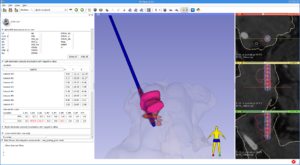Difference between revisions of "Project Week 25/Surgical Planning In Stereotaxy"
(Add project page) |
m (Add Slicer developers' affiliations) |
||
| Line 8: | Line 8: | ||
* Sara Fernández-Vidal ([http://icm-institute.org/en/ Brain & Spine Institute], Paris, France) | * Sara Fernández-Vidal ([http://icm-institute.org/en/ Brain & Spine Institute], Paris, France) | ||
* Fernando Pérez-García ([http://icm-institute.org/en/ Brain & Spine Institute], Paris, France) | * Fernando Pérez-García ([http://icm-institute.org/en/ Brain & Spine Institute], Paris, France) | ||
| − | * Csaba Pinter | + | * Csaba Pinter (Queen's University) |
| − | * Andras Lasso | + | * Andras Lasso (Queen's University) |
| − | * Steve Pieper | + | * Steve Pieper (Isomics, Inc.) |
Revision as of 15:47, 24 June 2017
Home < Project Week 25 < Surgical Planning In Stereotaxy
Back to Projects List
Key Investigators
- Sara Fernández-Vidal (Brain & Spine Institute, Paris, France)
- Fernando Pérez-García (Brain & Spine Institute, Paris, France)
- Csaba Pinter (Queen's University)
- Andras Lasso (Queen's University)
- Steve Pieper (Isomics, Inc.)
Project Description
PyDBS is an automated image processing workflow for planning and postoperative assessment of deep brain stimulation interventions. It takes as input patient-specific data (i.e. patient images and patient clinical data) and generic models (i.e. an anatomical atlas, a model of the stereotactic frame and a model of the implanted electrodes) and provides as output a patient-specific model for planning and postoperative assessment of DBS surgery. This patient-specific model is composed of patient images, segmented anatomical structures (volumetric binary masks and triangular surface meshes) and geometrical transformations (registration matrices and deformation fields). All images, masks and meshes are mapped to a common reference space and fused in geometrical 3D scenes that can be readily visualized by the surgeon.
The software used for visualization and surgical planning is 3D Slicer. PyDBS includes several modules used for targeting and surgery assessment.
| Objective | Approach and Plan | Progress and Next Steps |
|---|---|---|
|
|
